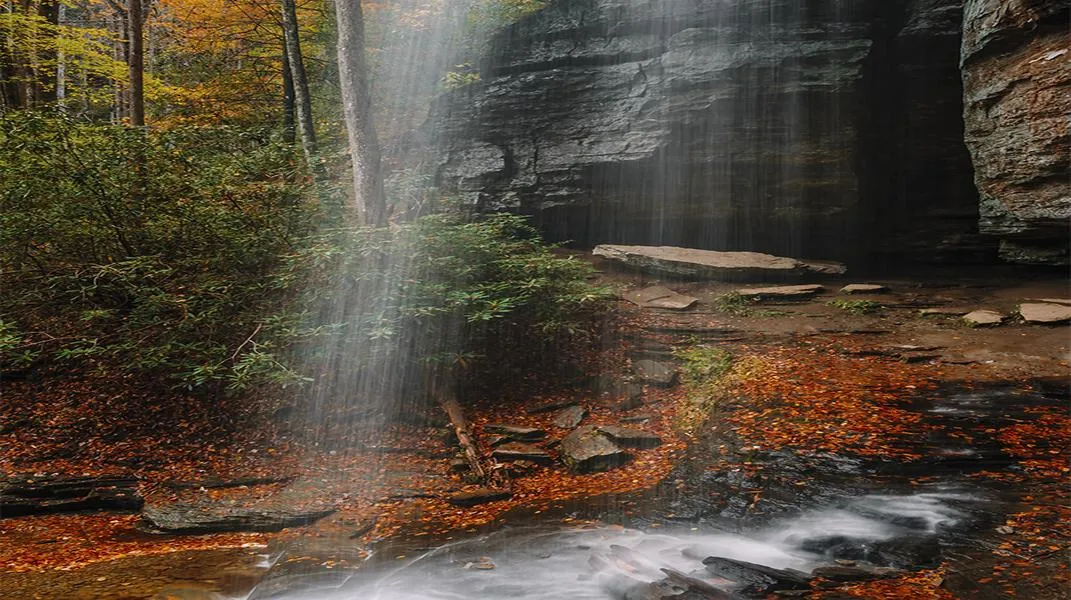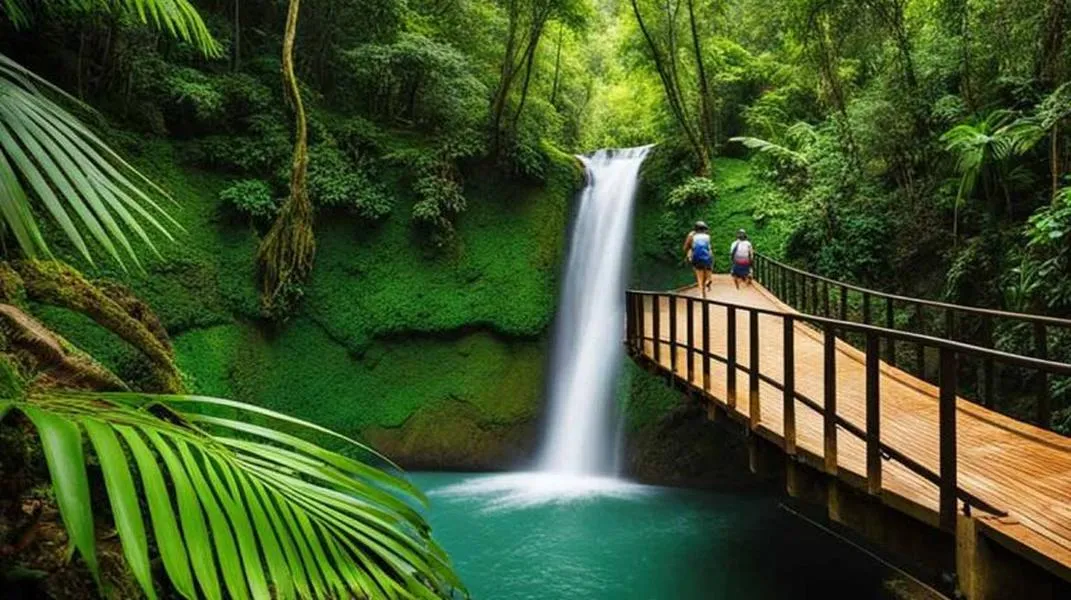Exploring Pisgah National Forest: A Nature Lover's Paradise
Nestled in the heart of the Appalachian Mountains, Pisgah National Forest is a breathtaking expanse of natural beauty spanning over 500,000 acres in western North Carolina. Known for its towering trees, cascading waterfalls, and stunning mountain vistas, this national forest offers a wealth of recreational opportunities that attract nature enthusiasts, hikers, and outdoor adventurers from all over the world. Whether you're seeking a tranquil escape into nature or an adrenaline-pumping adventure, Pisgah National Forest has something for everyone. This article will delve into the unique features of the forest, highlight popular attractions and activities, and provide a comprehensive guide on how to prepare for your visit.

A Brief History
Established in 1916, Pisgah National Forest was one of the first national forests in the United States. The land was originally a part of the Southern Appalachian region and has a rich history, including its significance to the Cherokee people and later settlers. The forest’s diverse ecosystems are a result of its unique topography, climate, and geology, making it a haven for various plant and animal species.
Main Attractions
Pisgah National Forest is home to numerous attractions that embody the essence of the Appalachian wilderness. Here are some of the must-visit spots within the forest:
1. Transylvania County Waterfalls
Pisgah National Forest boasts some of the most spectacular waterfalls in the eastern United States, particularly in Transylvania County. Notable falls include:
- Looking Glass Falls: Easily accessible from the road, Looking Glass Falls cascades over 60 feet and is a popular spot for photography and swimming. The fall's name comes from the way the water reflects sunlight, creating a shimmering effect.
- Triple Falls: Located along the popular Hooker Falls Trail, Triple Falls showcases three distinct tiers of water, providing a stunning backdrop for hiking and picnicking.
- Catawba Falls: A hidden gem, Catawba Falls requires a moderate hike to reach, but the breathtaking views of the multi-tiered waterfall make the effort worthwhile.
2. Hiking Trails
With over 400 miles of hiking trails, Pisgah National Forest offers a variety of options for hikers of all skill levels. Some popular trails include:
- Mount Pisgah Trail: A moderate 2.6-mile hike that leads to an observation tower with panoramic views of the Blue Ridge Mountains.
- Cradle of Forestry: This historic site features several easy hiking trails that meander through lush forests and offer interpretive signs about the area's history and ecology.
- Art Loeb Trail: This challenging 30-mile trail traverses some of the most rugged and scenic terrain in the forest, providing stunning views and a true backcountry experience.
3. Biking and Off-Roading
Pisgah National Forest is a mountain biking Mecca, with over 100 miles of trails designed specifically for cyclists. The forest's terrain offers everything from smooth, flowing trails to technical, rocky descents. Popular trails for biking include:
- Sycamore Cove Trail: A beginner-friendly loop that offers a gentle ride through beautiful woodlands.
- Black Mountain Trail: A more challenging ride that rewards cyclists with stunning mountain views and thrilling descents.
4. Wildlife Viewing
Pisgah National Forest is a habitat for a diverse range of wildlife, including black bears, deer, wild turkeys, and numerous bird species. Birdwatchers and wildlife enthusiasts will find a wealth of opportunities to observe these creatures in their natural habitats. Early mornings or late afternoons are often the best times for wildlife viewing.
5. Camping and Lodging
For those looking to immerse themselves in nature, Pisgah National Forest offers numerous campgrounds and backcountry camping options. Some of the most popular campgrounds include:
- Davidson River Campground: Located along the Davidson River, this campground offers spacious sites and easy access to fishing, hiking, and biking trails.
- Coon Dog Campground: This secluded campground is perfect for those seeking a quiet escape, with sites nestled among the trees and close to several hiking trails.
For visitors who prefer more comfort, nearby towns like Brevard and Asheville offer a range of accommodations, from cozy cabins to luxurious hotels.
Preparing for Your Visit
Before heading out to Pisgah National Forest, it's crucial to prepare adequately to ensure a safe and enjoyable experience. Here’s a comprehensive guide to help you get ready.
1. Research and Plan Your Itinerary
Familiarize yourself with the forest's layout, attractions, and available activities. Identify the trails you want to hike, the waterfalls you want to visit, and any other attractions that interest you. Consider the time of year and weather conditions, as they can significantly impact your experience.
2. Get the Right Gear
Depending on your planned activities, you'll need to pack the appropriate gear. Here’s a checklist of essentials:
- Hiking Gear: Sturdy hiking boots, moisture-wicking clothing, a hat, and a daypack.
- Navigation Tools: A map of the forest, a compass, or a GPS device. Mobile signal can be limited in remote areas, so having a physical map can be invaluable.
- Safety Equipment: A first aid kit, a whistle, a multi-tool or knife, and a flashlight or headlamp.
- Water and Snacks: Hydration is essential, particularly during long hikes. Carry a reusable water bottle or hydration system and pack energy-rich snacks like granola bars, nuts, and dried fruits.
3. Prepare for Weather Conditions
The weather in the Appalachian Mountains can be unpredictable. It’s wise to check the forecast before your trip and pack accordingly. Layering is key; bring a lightweight, moisture-wicking base layer, an insulating mid-layer, and a waterproof outer layer. Don’t forget to include a rain jacket, especially if you’re hiking in the spring or summer months.
4. Leave No Trace
Pisgah National Forest is a pristine environment that requires respect and care from its visitors. Familiarize yourself with Leave No Trace principles, which include:
- Packing out all trash and waste.
- Staying on designated trails to protect fragile ecosystems.
- Respecting wildlife and maintaining a safe distance.
- Minimizing campfire impact and using established fire rings where permitted.
5. Check Regulations and Permits
Before your visit, check for any specific regulations, permits, or fees that may apply to certain activities or camping areas. Some sites may require advance reservations, especially during peak seasons.
6. Stay Informed and Safe
Share your itinerary with someone who isn’t joining you, and ensure you have a fully charged mobile phone (though coverage can be spotty). Always let someone know your expected return time. In case of emergencies, familiarize yourself with the locations of ranger stations and emergency services in the area.
Conclusion
Pisgah National Forest is a treasure trove of natural beauty and adventure, offering something for everyone—from serene waterfalls to exhilarating hiking trails. Whether you’re a seasoned outdoor enthusiast or a casual visitor seeking a peaceful retreat, the forest provides an unparalleled opportunity to connect with nature and experience the best of the Appalachian wilderness. By preparing properly and respecting the environment, you can ensure a memorable visit to this remarkable national forest. So pack your bags, lace up your boots, and get ready to embark on an unforgettable journey through the enchanting Pisgah National Forest!




